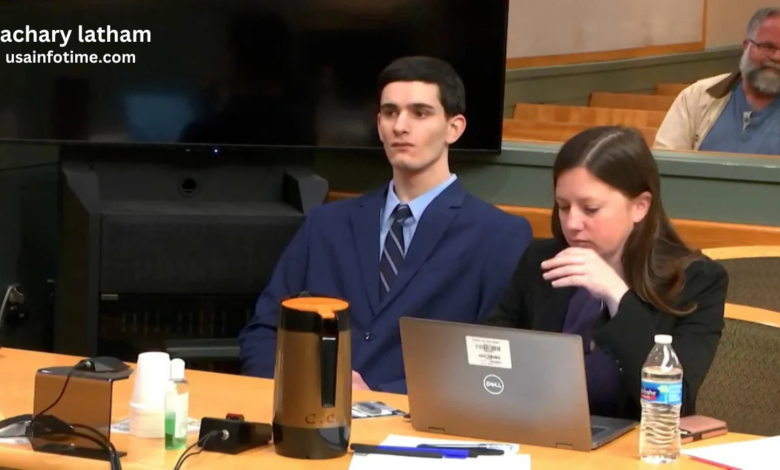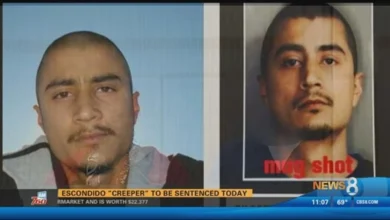Story of Zachary Latham: The Man Behind a Tragic Incident

Introduction
Zachary Latham’s name became widely known across the United States in connection with an event that shocked the country and raised significant questions about the use of self-defense laws, family feuds, and the wider implications of social media and technology in shaping modern legal cases. In this article, we’ll explore the events surrounding the incident, the trial, the public reactions, and the lasting consequences for everyone involved.
Who Is Zachary Latham?
Zachary Latham’s life prior to the tragic incident is not as widely documented as his actions on May 4, 2020, but understanding his background helps provide context. Born and raised in New Jersey, Latham was a relatively unknown teenager before the events that would thrust him into the national spotlight.
While not much is known about his early life, Latham’s family background does offer some insights into the complexities that may have contributed to his behavior. He was living in a neighborhood that seemed to have its own dynamics—interactions with neighbors, school life, and the general social atmosphere that often shapes a person’s development.
In his late teens, Zachary Latham moved to a new home in the small suburban town of Vineland. This change introduced him to a new group of neighbors and the beginning of a series of escalating tensions that would lead to his fateful confrontation with a local family.
Latham’s presence on social media is another key aspect to consider. Social media platforms have increasingly played a role in shaping narratives and actions in modern life, and Zachary Latham’s use of these platforms came to light during the investigation into the incident.
The Family Feud: A Growing Tension
Latham’s relationship with his neighbors, the Metzs, was the primary factor that led to the tragic event. It started as a minor dispute but soon grew into an intense and hostile interaction between the two families. At the heart of this was the presence of Latham’s behavior, which some neighbors perceived as provocative and disrespectful.
What started with complaints about a noisy car quickly escalated into a series of confrontations between the Latham family and the Metz family. For many, this would have been seen as a series of petty arguments or misunderstandings, but the tension between the two households only deepened over time.
In interviews and testimonies later presented during the trial, it was clear that Latham’s approach to dealing with his neighbors was not one of resolution but of defiance. His growing antagonism toward the Metz family led to an online escalation, with Latham filming the confrontations and posting videos online. This fueled the tension even further, bringing in a larger audience to witness the increasingly volatile situation.
What started as a seemingly harmless neighborhood squabble quickly turned into something much more dangerous. The role of social media in amplifying personal disputes was a key element that played into the larger narrative of the incident.
The Fatal Confrontation: What Happened on May 4, 2020?
The pivotal moment in the story of Zachary Latham came on May 4, 2020, when the escalating tensions between Latham and the Metz family culminated in a tragic event that resulted in the death of 51-year-old William Metz.
The night of May 4 saw a confrontation between Latham and the Metz family, which began as a verbal altercation in the street. However, it soon became much more violent. Latham, who was 18 years old at the time, had been filming the incident on his phone. The videos would later become central evidence in the investigation and trial.
According to reports, the altercation started with words being exchanged between Latham and the Metz family, but things quickly escalated as Latham allegedly acted in a way that provoked physical aggression. At some point, the situation turned physical, with Latham allegedly being assaulted by members of the Metz family. During the struggle, Latham was able to retrieve a knife, and in the chaos of the fight, he fatally stabbed William Metz.
The police investigation, bolstered by video footage of the incident, revealed a tragic pattern of escalation. What had begun as a minor dispute was now a tragic, life-altering moment for everyone involved. Zachary Latham, who had reportedly been attempting to film and provoke the situation, found himself in a fight for his life, ultimately taking the life of William Metz.
The Aftermath: Legal Consequences and Public Reaction
Following the deadly confrontation, the case quickly became one of national interest, especially as it unfolded in the media. The videos taken by Zachary Latham played a significant role in shaping public opinion. The trial became a focal point for discussions about self-defense laws, the role of social media in criminal cases, and the consequences of escalating personal disputes.
Zachary Latham was initially charged with manslaughter for the killing of William Metz. However, Latham’s defense team argued that he was acting in self-defense, citing that he had been assaulted by the Metz family before using force. The complexity of the case stemmed from the fact that while Latham had been actively filming the confrontation, it was unclear whether his actions were purely defensive or if they contributed to the escalation.
The case garnered significant attention in the media, with many people taking sides. Some felt sympathy for Latham, viewing him as a young man caught in an aggressive confrontation, while others criticized him for deliberately provoking the situation through his social media actions. In the court of public opinion, many questioned the ethics of filming such a violent encounter for social media purposes.
The Trial: Self-Defense or Manslaughter?
Zachary Latham’s trial became a key moment in the larger conversation about the definition of self-defense and the role of technology in modern criminal cases. During the trial, much of the defense hinged on the argument that Latham was trying to protect himself from an aggressive attack by the Metz family.
The prosecution, however, painted a different picture of the events. They argued that Latham’s role in escalating the situation meant that he was not acting purely in self-defense, but rather was responsible for stoking the tensions that ultimately led to the fatal encounter. The videos captured by Latham played a pivotal role in the trial, serving as a crucial piece of evidence in determining his intent and actions during the confrontation.
Throughout the trial, discussions centered around whether Latham had a reasonable fear for his life or whether he could have de-escalated the situation before it reached its deadly conclusion. The decision to film the encounter and post it online also raised questions about how technology influences modern-day criminal behavior and investigations.
The verdict ultimately found Zachary Latham guilty of manslaughter, though he was not convicted of murder. The legal system’s handling of the case ignited debates about the fine line between self-defense and aggression, especially when technology amplifies real-life conflicts.
The Impact of Social Media on the Case
One of the most critical aspects of the case was the role of social media, both in the lead-up to the incident and in the aftermath. Latham’s decision to film and post the confrontation online was heavily scrutinized by both the public and the legal system.
Social media has a double-edged sword: on one hand, it provides a platform for people to express themselves and share information, while on the other hand, it can be a tool for inflaming conflicts and turning personal disputes into public spectacles. In Latham’s case, the decision to film and share the altercation was seen by some as a deliberate attempt to provoke the Metz family, while others argued that Latham had the right to document the events as they unfolded.
Regardless of one’s stance on the ethics of filming confrontations, the role of social media in shaping this case cannot be ignored. The videos acted as evidence but also played a significant role in influencing public opinion, making the incident more than just a tragic death—it became a spectacle, shared and analyzed across the internet.
What Can Be Learned From the Zachary Latham Case?
The story of Zachary Latham serves as a cautionary tale on many fronts. First, it highlights the dangers of escalating conflicts, particularly when they occur in close-knit communities where tensions can easily turn into violence. The case also sheds light on the complex nature of self-defense laws and how they are applied in real-life situations.
Additionally, the involvement of social media raised significant questions about the ethics of documenting violence. Should we be encouraging people to film altercations as a means of protecting themselves, or does this inadvertently encourage a culture of confrontation and public shaming?
Moreover, the Latham case underscores the importance of addressing underlying issues that may lead to violent encounters, such as mental health concerns, family dynamics, and communication failures. Instead of reacting impulsively or aggressively, a more thoughtful and calm approach to conflict resolution might prevent the escalation of such tragic situations.
Conclusion: The Lasting Legacy of the Zachary Latham Case
The tragic story of Zachary Latham is not just about one fatal confrontation but about the broader issues that influence how we handle conflicts in our modern society. The case raises questions about the responsibility of individuals in de-escalating tension, the implications of using social media as a tool for provocation, and the challenges of interpreting self-defense laws in a digital age.
In the end, while the Latham case may have concluded with legal consequences for the individual involved, it leaves us with a deeper understanding of the complexities of human behavior, the influence of technology on modern life, and the long-lasting impact of one person’s actions on an entire community.





